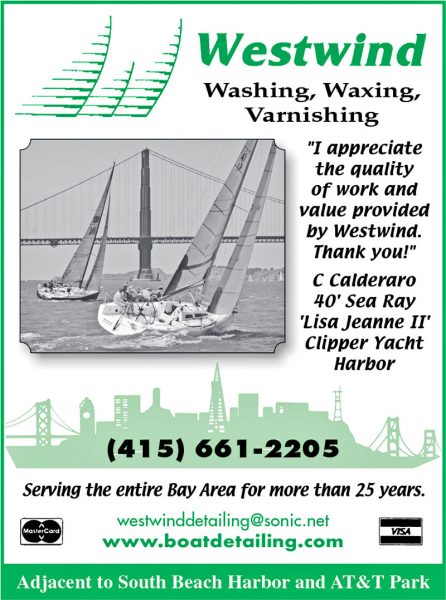
The Legend of Lowell North
Lowell Orton North, the founder of North Sails, Olympic gold medalist, and sailing icon of his time, passed away on Sunday.
While North may very well have paved the way for the high-tech, multinational sailmaking industry that we know today, he represented a simpler, though still fiercely competitive, era of the sport — a time before professionals and egos ruled the water. There will not likely be another sailor like Lowell North.
He was 89 years old, and passed away at his home in Point Loma.
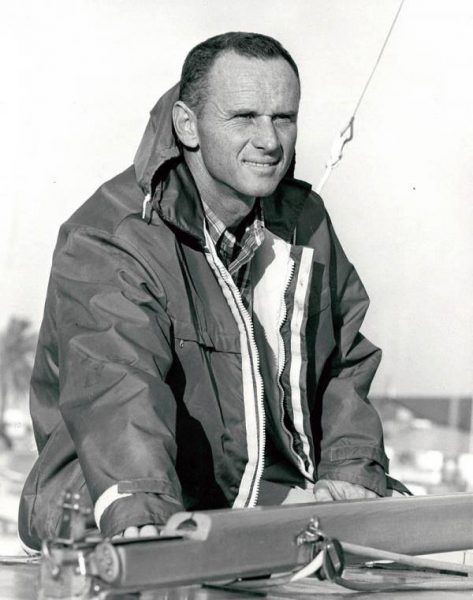
“He’s one of my absolute heroes, and was an incredibly smart engineer and sailmaker, and just a great guy,” said Dave Ullman of North in a 2017 interview with Latitude.
As a now well-circulated story goes, North began his career as a sailmaker at 14 years of age, when he and his father started racing Stars and losing — badly. “The father-and-son team came in last in every race, motivating the younger North to recut the mainsail,” reported the San Francisco Chronicle. Back then, cotton was the material of choice for racing sailboats.
North would earn a degree as an aeronautic and aerospace engineer. When he opened the first North Sails loft on Shelter Island in the late 1950s, “his methodical and scientific approach to sailmaking changed the industry.” Sailmaking began to utilize computer models, and, as materials progressed, advanced manufacturing techniques. Sails would never be the same.
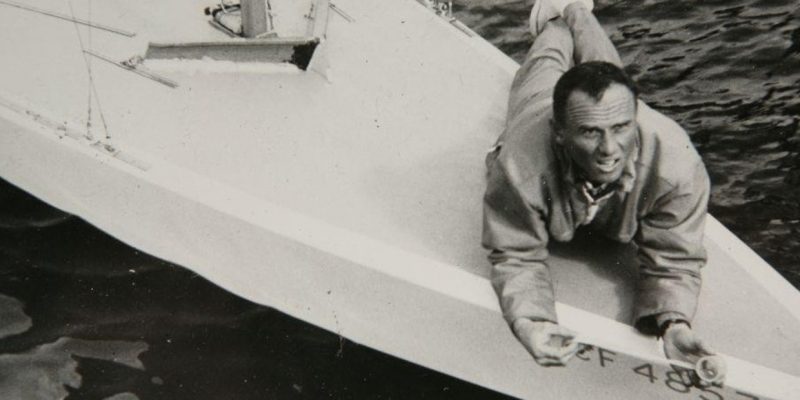
North took bronze in the Dragon class in the 1964 Olympics in Tokyo and gold in Stars in the 1968 Games in Mexico City. He medaled 12 times in the Star World Championships between 1945 and 1973. But it was North’s demeanor and sportsmanship that truly set him apart.
“‘He affected many people’s lives when you think about what he’s done in sailing,'” the Chronicle wrote, quoting Malin Burnham, one of North’s partners in the Star. “‘You know, in the world today, we’re talking about civility. He was the epitome of that. I never saw him upset or arguing. He was always calm, cool and collected. He was a great listener. We don’t have to agree in this world, but maybe we can learn something if we just listen. Lowell was that kind of person. He was special.'”
I got to sail with Lowell North back in late ’90s. I don’t remember how I got the gig, but my cousin and I jumped onboard his J/105 at San Diego Yacht Club.
“I remember that day when I put two and two together and realized that North meant North,” my cousin wrote me last night. I remember making the connection, too, but recall that North was relaxed, gracious, and easy to sail with.
Among those racing that day was Dennis Conner. As we were approaching a mark, Dennis called “Room!” — and it appeared that he just had it.
“No,” North said flatly.
And that was that. There was no retort, no argument, no yelling. My recollection is that Conner fell in and rounded behind us.
I’ve told that story to countless sailors over the years, and all of them have said some variation of, “He was probably the only guy that could shut Dennis down like that.”
Carbon Is the New Black
Jeff Canepa wrote us about another Northern California boat under construction. “On the windward shore of the Big Island [meaning California], a stone’s throw from the cool Monterey Bay trades, unfolds the all-new Antrim 27 ‘C’. Number 28 (27 were built by USI) is now under construction by builder Joe Kitchell.”
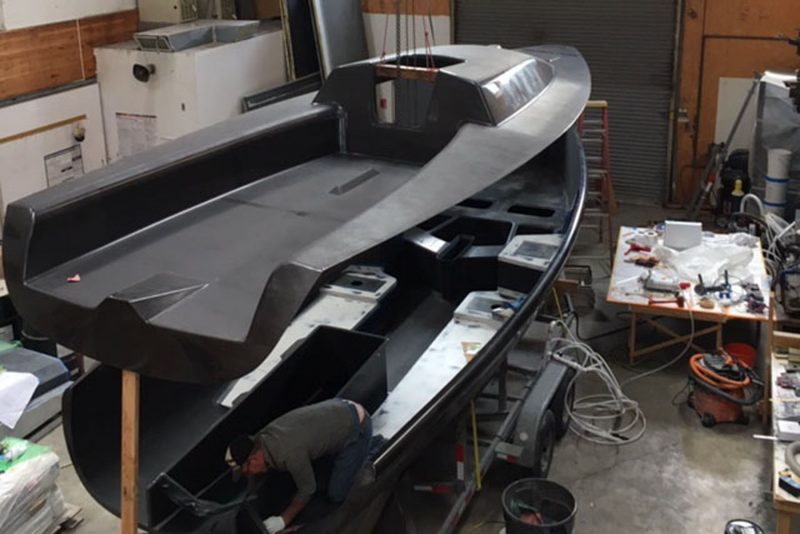
“Once again the ‘Wizard of El Sobrante’, naval architect Jim Antrim, has partnered with Bay Area sailor Buzz Blackett to build a downwind flyer for the 2020 Pacific Cup.”
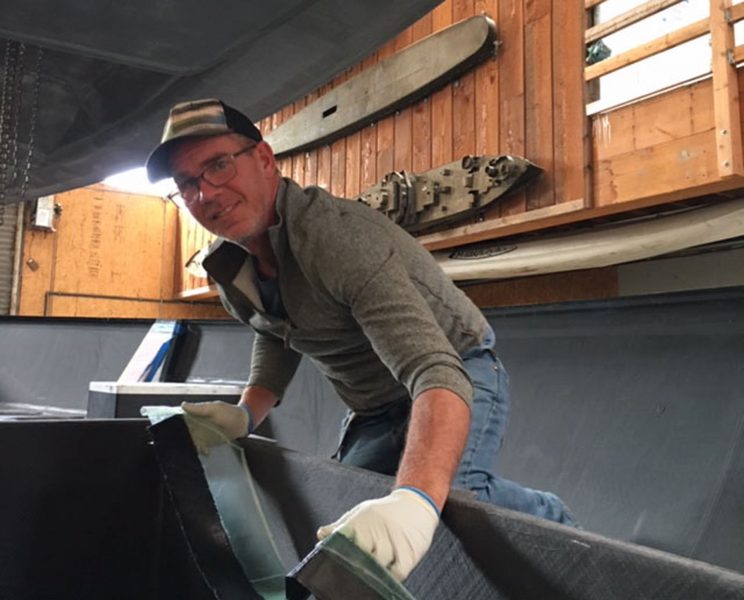
The term ‘ultralight’ was coined on the California coast before carbon was even part of the boatbuilding scene. Now carbon is in all fast, wave-skipping hulls. It’s making California ultralights even lighter.
We’ll post an update when the Antrim 27 C is closer to launch, and also possibly an Antrim 25 C. In the meantime, send us a note if you have a project in a shed somewhere.
Westwind Boat Detailing
Barry’s Baleen Will Scour the Sea
When we first met him, Barry Spanier exuded passion about all things sailing and the ocean. A Bay Area native, Spanier sailed out the Golden Gate in 1975, went on to cruise the South Pacific, shipwreck, live in the jungle in Tahiti, forge a friendship with Bernard Moitessier, and eventually settle in Maui, where he became one of the most sought-after windsurfing sailmakers. Spanier is currently building the Rosie G — a unique cruiser that he’s been mulling over for decades — at Berkeley Marine Center under the expert eye of master boatbuilder Cree Partridge.
Spanier also has his sights set on one of the most pressing environmental issues of our time: plastics in the ocean. Spanier conceived of a boat called the “Baleen” (also known as Ships that Scour the Sea), named after filter-feeder whales.
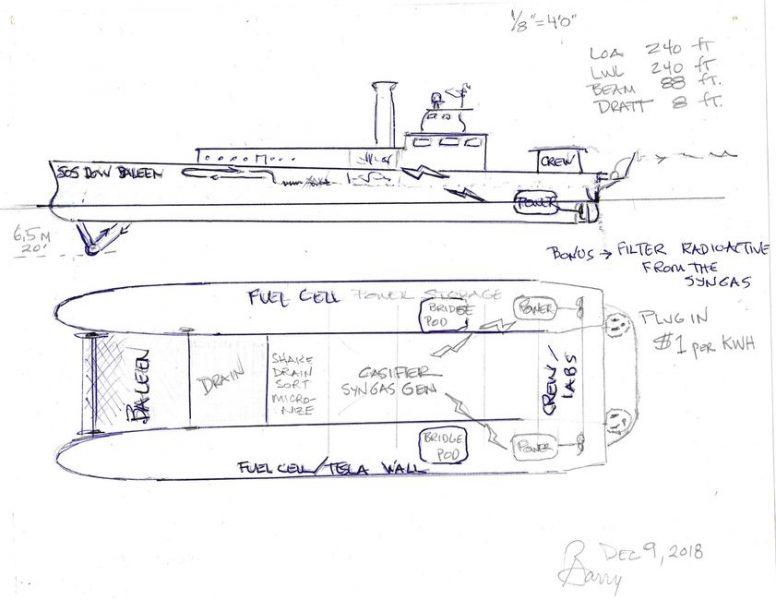
“The ships [would] function as laboratory stations, observation posts and for teaching experience,” Spanier wrote on his website, pondering the positive side effects that building the ‘scourers’ could have. “Rebuilding the steel industry. Rebuilding ship building. Employing thousands. Crew service is equivalent to military. We know youth are desperate to be working at something meaningful to humanity and the planet. In full swing, there are 250 ships, each costing $50 million or less. Fifty ships scour each known gyre following coordinated GPS guidance.”
When we met up with Spanier at BMC back in April, he said, “Baleen is where my big intention is now. We can do this. Shit, Larry Ellison could do it with pocket change.”
Spanier believes that the boats can effectively power themselves with the trash they collect, given advancements in plastic to diesel technology. “Gasification converts one ton of matter into one megawatt of power,” Spanier wrote. “This runs the ship systems and power train. With battery storage walls or hydrogen fuel cells, it can store power for other electric vessels.”
On his website, Spanier mused on the vicious cycle of plastic, money and waste: “Where do the dollars come from? Where do they go? Oil comes out of the ground. It costs money to get oil out and sell it for money. It’s pumped by derricks at a cost to make money. Someone built that pipeline with money to move oil, to the trucks that cost money to move the oil, to the refinery that makes money by producing the raw materials for plastic, to the tanker ship that makes money moving the purified oil, to the plastics factory that makes money making things out of the oil, to the container ship that makes money moving the plastic goods, to the ports that cost money to transfer the shipments, to the semi-trucks that cost money to haul the plastic, to the warehouse that charges money to handle the plastic, to the delivery truck that charges money to get the plastic to the retail store, to the money exchange of the household . . . All outward, to the garbage — no money, just cost of hauling the garbage — if there is such a thing in the third-world places, to the river where the plastic flows with the river to the sea. It accumulates in giant masses of trillions of tons of waste.”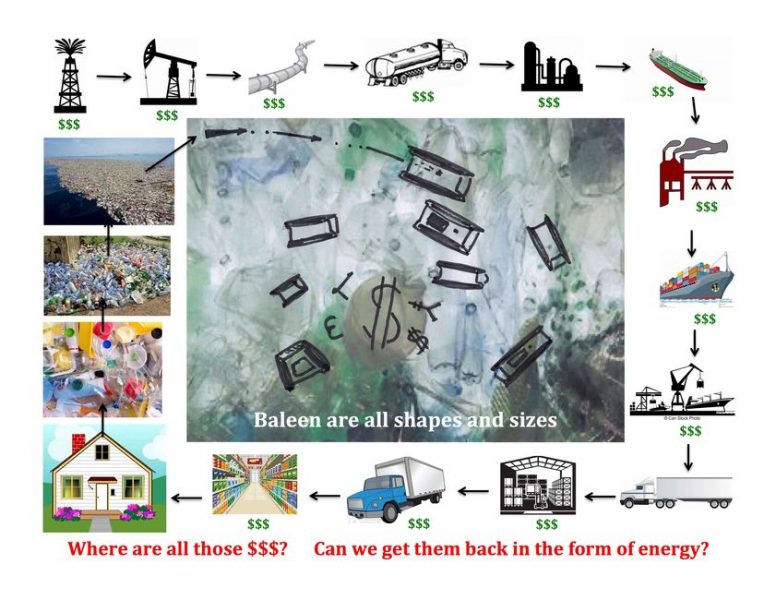 We’ll have more on some of the different — and often competing — ideas for cleaning up the ocean, and preventing trash from getting there in the first place, in the July issue of Latitude 38.
We’ll have more on some of the different — and often competing — ideas for cleaning up the ocean, and preventing trash from getting there in the first place, in the July issue of Latitude 38.
Americans Win Euro Cup
On June 1, the American team of Mike Holt and Carl Smit won the 51-boat 5O5 Euro Cup Riva del Garda, the second leg of the Euro Cup series. Sailed at Fraglia della Vela Riva on Italy’s Lake Garda, the regatta came down to the last leg of the last race in a duel between Holt/Smit (USA) and Malcolm Higgins/Nick Johnson (AUS).
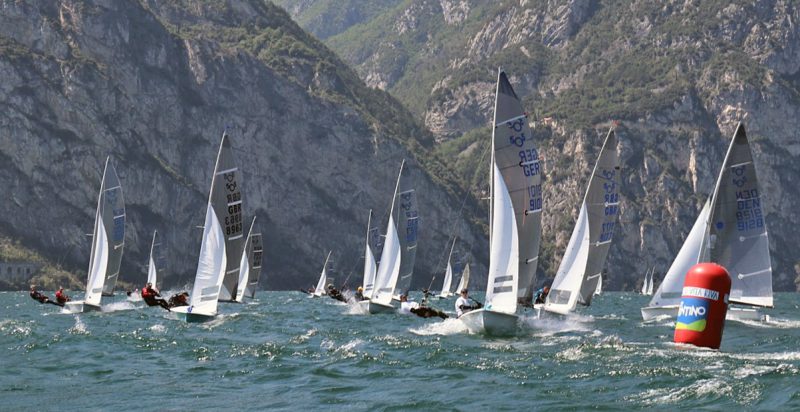
“By race time it was blowing a perfect 15-18, with a few shifts to make it interesting,” reported winning helmsman Mike Holt, from Santa Cruz. “At the top of the leaderboard it was tight, and all the way down there were private battles to be had to try and move up. Race 7 the fleet got away cleanly. Those that started at the committee boat and were quickest away on to port held the advantage, with Canadians Bob Tennant and Steve Bourdon getting their bow ahead, chased by a pack of boats. They were to hold their lead the whole way around, while some real drama played out behind them.
“The Australian team of Higgins and Johnson had pulled through the fleet to second, which would have put them in the lead with a race to go. However, they tried to fly their spinnaker across the short top leg, could not make it, and dropped to fourth, the British team of Clark and Clark taking advantage to score a second place.
“Going into the final race, it was a tie at the top. Essentially the winner of the Riva Cup would come down to who beat whom between the US team and the Aussies, with the tussle for third equally close between two British teams and the Canadians. The race got away cleanly, with a big split with the bulk of the fleet going for a committee-boat start and an early tack to the ‘cliffs’. A smaller — but this time smarter — group went for a pin-end port-tack start. We got this call right to lead at the top, followed by the British team of Andy Smith and Stewart Mears. Close behind them were Higgins and Johnson. The race was now on!
“By the first bottom mark Smith and Mears had moved into the lead, and, importantly, Higgins and Johnson rounded just ahead of us. The positions remained unchanged up the next beat, so it was all on the last run and short reach to the finish. We jibed out to the middle of the lake, while the leading two went to the eastern shore. When the three boats came back together, the places were the same but the gaps had closed.
“By the leeward mark Smith and Mears had done enough to close out with a race win, Higgins and Johnson jibed with the kite up, and we followed tight behind them but without the kite. No kite was the right call, and we sneaked across just ahead in second to take the win by 1 point. Could not have been any tighter. Yet again Riva delivered a fantastic event, great breeze, stunning scenery, food and racing. No wonder so many people keep coming back!”
The Euro Cup is a four-event series that takes place across France, Italy, Germany and the UK. A winner is determined at each event, as well as an overall series winner based on cumulative scores from three of the four regattas. See www.int505.org/2019-euro-cup/euro-cup-round-2-riva-del-garda-italy for more info and full results.

